_770.webp)
Roulette rules and strategies are familiar to many gamblers, but the details of the roulette table design are known to a significantly smaller number of people. However, the roulette wheel makes the game what it is. This is why we discuss all of its components in detail. This information is essential for the players and very interesting.
Still, the basics can also be considered: the following article will deal with the physical system for playing roulette, requiring knowledge of the roulette wheel construction from gamblers.
Basic Components of the Roulette Wheel
A typical roulette, currently used at casinos, consists of more than 300 different fragments, adjusted to each other with pinpoint accuracy.
This accuracy is an obligatory factor since any physical deformation will affect the ball movement, which should be avoided: outcomes must be determined randomly.
It is interesting to note that the roulette wheel was invented in the 18th century, and since that time, its design has not changed. Numbers and colors have remained unchanged.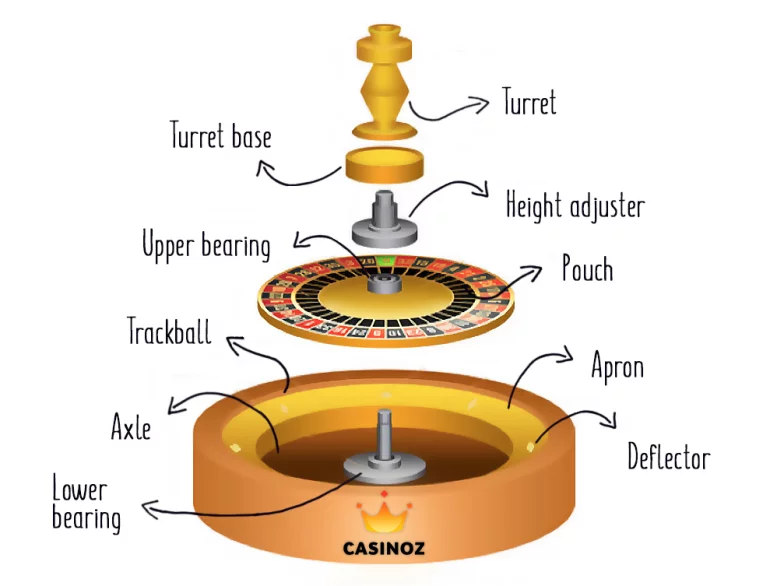
Roulette Bowl
The main component of the roulette wheel is a bowl. Traditionally, the bowl is made of fine wood. It has a diameter of approximately 90 cm, is carefully sanded, and is varnished. The bowl should be perfectly polished to ensure equal movement of the lower base and flat surface.
Currently, there are also plastic bowls. They are cheaper and easier to manufacture, but reputable casinos use only wooden roulette wheels. Plastic wheels look worse, and condensation can form on their bowls.
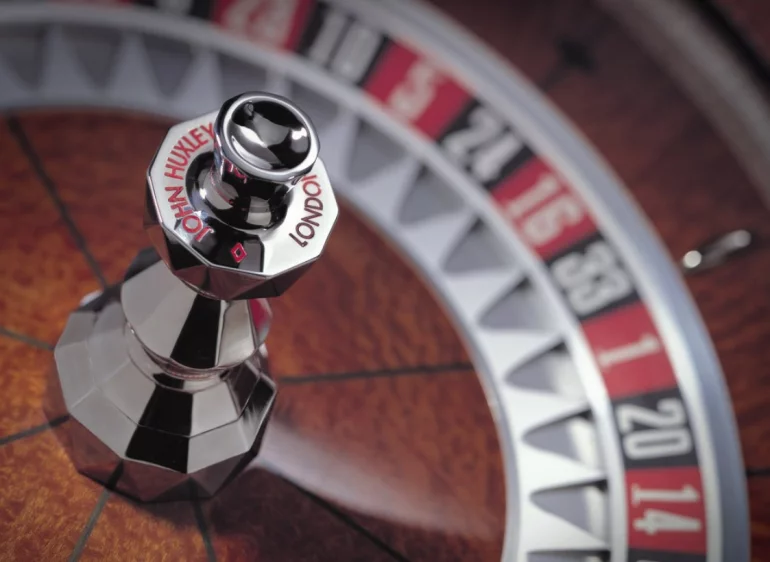
The invisible lower part of the bowl, which is incorporated into the fixed roulette table, is made of several layers of wood. Its processing is more complex than that of the upper part of the bowl. This is necessary to ensure that the wood will not be warped by moisture or temperature changes that may result in abnormal wheel speed.
The bowl is a fixed component of the roulette wheel. In the middle, there is a spindle that supports the rotating wheel head. There is a turret above the spindle. In addition to decorative functions, it also has a practical significance: there is an invagination for an extra ball on its top.
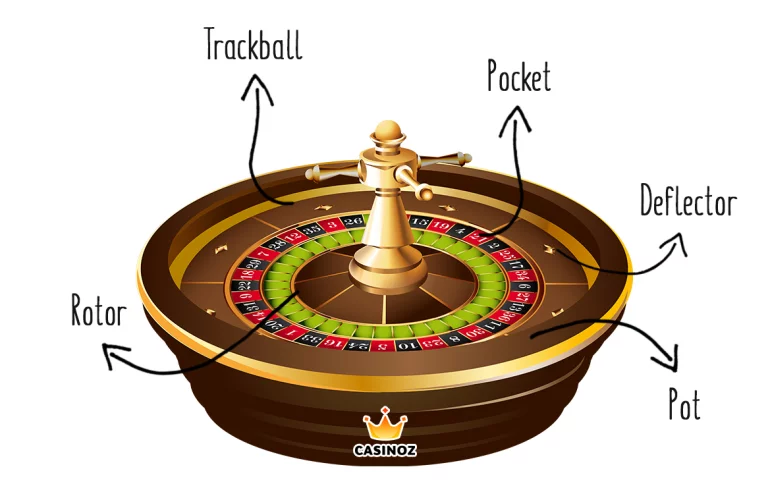
The upper part of the bowl is slightly curved, which prevents the ball from flying off. In the upper part of the bowl, there is a ball track that holds the rotating ball. The lower ball track is located below. This is a slope that provides space for deflectors.
Roulette Deflectors
Deflectors are small diamond-shaped obstacles made of metal on the lower ball track. They also have many other names: diamonds, pins, slats, stops, and disruptors. They are equally and symmetrically located around the wheel, forming vertical and horizontal barriers individually. Most modern roulette wheels have eight deflectors. Some older wheels have 16 deflectors.
These little obstacles are designed to make the ball's movement more unpredictable. Spinning the ball should pass through the lower ball track and deflectors to enter the rotor and fall into a numbered pocket.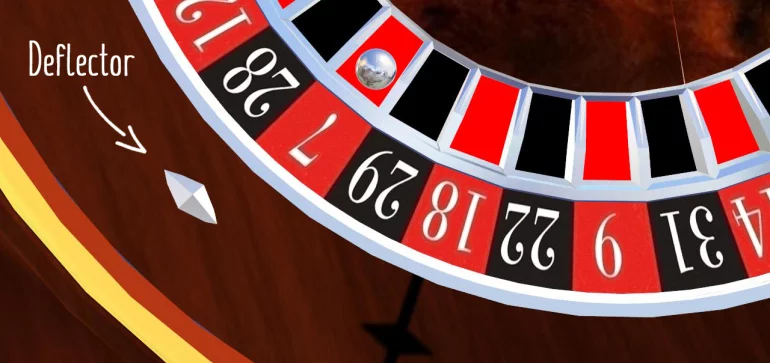
Roulette Rotor
The rotor is the heart of the roulette wheel. Its diameter is roughly 50 cm. It weighs 30-50 kg, allowing it to rotate at a considerable speed. The rotor is attached in the middle of the bowl to the spindle with the help of a bearing, which allows it to rotate freely.
Roulette Pockets
Thirty-seven pockets are evenly distributed on the rotor. They are separated by metal barriers called separators and located between them.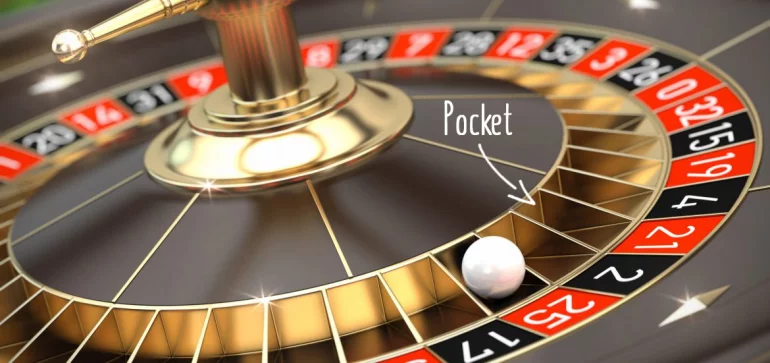
The pockets are alternately painted in red and black. There are also one or two green zero pockets. Pockets are numbered with white paint. At first glance, the numbers seem to be written chaotically, but they are arranged in strict order. The standard arrangement of numbers is believed to be designed based on calculations of the famous mathematician Blaise Pascal, who lived in the 17th century in France.
According to its construction, the pockets are one of the most variable parts. We are talking about their design. Nowadays, more and more wheels have separate pockets whose outer part does not have separators. They have only color and number; the inner part is the pocket itself.
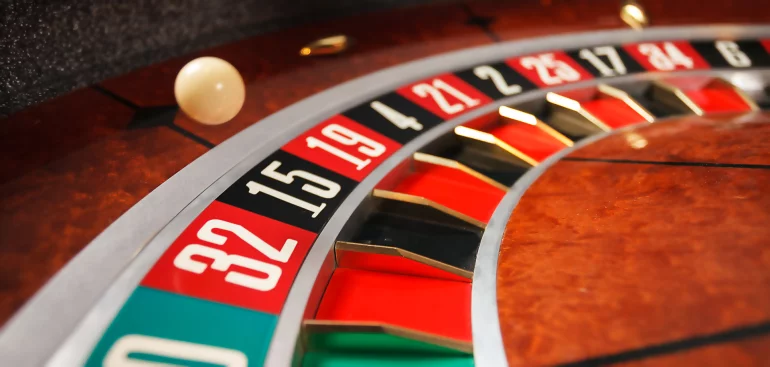
The pockets of the first roulettes were pretty deep, but the edges are becoming smaller and smaller. So, most modern wheels have a low-profile design for the pockets.
Roulette Ball
The roulette ball typically has an 18-21 mm diameter and weighs 6 grams. Traditionally, the balls were made of ivory, one of the most valuable materials when roulette was invented. That is why it was perfect for a luxurious and elegant casino atmosphere. Modern casinos often use balls manufactured of plastic or Teflon.
They have practically replaced ivory balls for several reasons:
- Firstly, ivory is not used on moral grounds;
- Secondly, plastic balls move more unpredictably, bouncing off the reflectors and separators;
- Thirdly, plastic balls wear out the roulette wheel less intensively.
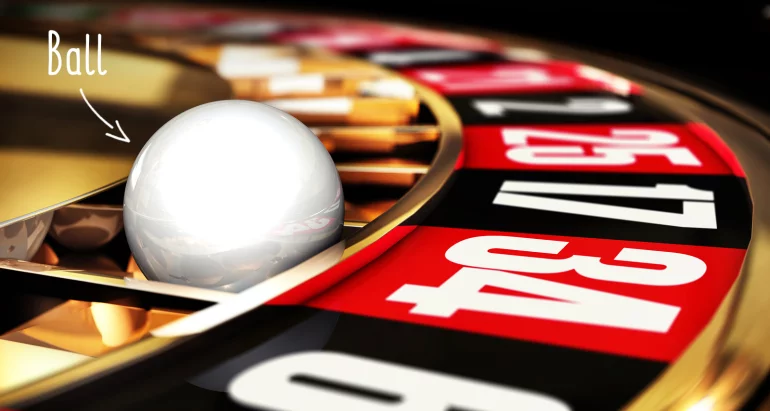
The croupier spins the ball clockwise, and the wheel is spun counterclockwise. To prevent any manipulation with the balls, including those performed by fraudulent employees, they are stored at casinos in safes.
The Lifetime of Roulette Wheels
If light plastic balls are used, the roulette wheel can be used on average for 10 to 20 years. Most casinos regularly replace the rotors of the roulette wheels. Depending on the location of the roulette in a casino, some wheels operate more than others, which causes them to wear out more rapidly. Therefore, only regular ball replacements can provide even wear on all wheels.
In addition, the rotors are replaced for other purposes. Casinos can not afford to provide gamblers with the opportunity to obtain high profits and try to avoid this at all costs. Therefore, first of all, their owners pay attention to the quality and accuracy of the adjustment of all fragments of the roulette wheel.
In this regard, most casinos use a strategy that makes it more complicated to search for the defects of the wheel. They regularly, even daily, replace rotors of different roulettes. Roulette manufacturers make special rotors of the same design that can be used interchangeably for different wheels.
Each roulette wheel is constantly being monitored on both sides:
- By independent experts,
- By casino employees.
Arrangement of Numbers
As mentioned above, the sequence of numbers on the wheel initially seems chaotic, but this is not true. On the contrary, it is based on a complex system that eliminates potential biases to ensure a random distribution of all numbers. Let's examine the rules of number arrangement for the two basic types of roulette: American and European.
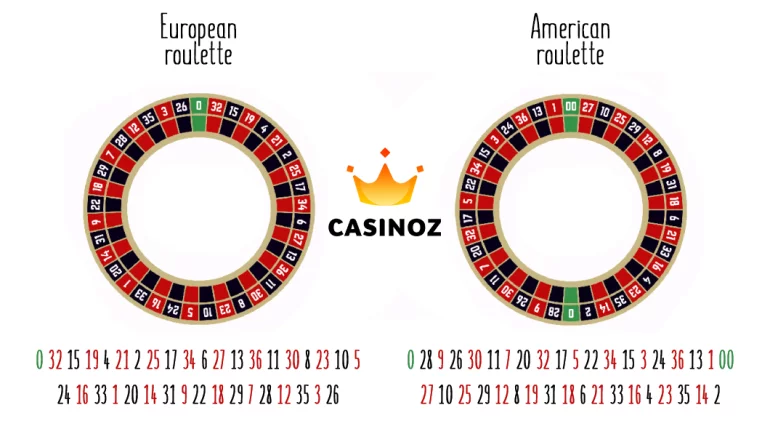
European Roulette
In European roulette, starting from zero clockwise, the following sequence of numbers is observed: 0, 32, 15, 19, 4, 21, 2, 25, 17, 34, 6, 27, 13, 36, 11, 30, 8, 23, 10, 5, 24, 16, 33, 1, 20, 14, 31, 9, 22, 18, 29, 7, 28, 12, 35, 3, 26.
How are the numbers distributed? It is impossible to miss the first pattern: looking at the wheel, we can see that the red and black colors are always arranged individually. You cannot notice two black or red pockets next to each other. On any roulette wheel, red and black numbers are always constant:
- Red numbers: 1, 3, 5, 7, 9, 12, 14, 16, 18, 19, 21, 23, 25, 27, 30, 32, 34, 36;
- Black numbers: 2, 4, 6, 8, 10, 11, 13, 15, 17, 20, 22, 24, 26, 28, 29, 31, 33, 35.
Odd and even numbers are not always located alternately: on the wheel, there are 13 sites where two even or two odd numbers are located next to each other. Three odd or even numbers in a row cannot be found.
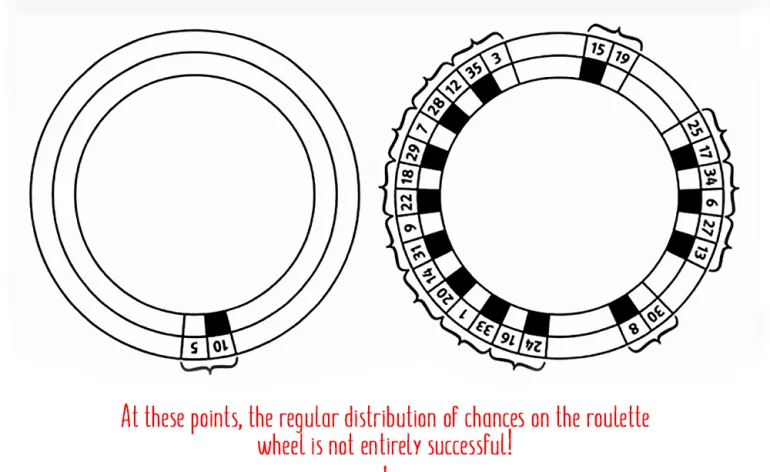
Then, everyone knows that the sum of all roulette numbers equals 666. However, a few people know that if you divide the wheel into two equal parts by a fictitious line from 0 to 5-10, the sum of the numbers on each half of the wheel will equal 333. In addition, each half of the wheel will have:
- Nine numbers from each pair (red/black, odd/even);
- Six numbers from each dozen (1-12, 13-24, and 25-36);
- Three numbers from each half-dozen (1-6, 7-12, 13-18, etc.).
In addition, there is the following distribution of numbers:
- Half of the wheel that is located from the right side of zero has nine low black numbers (2, 4, 6, 8, 10, 11, 13, 15, 17) and nine high red numbers (19, 21, 23, 25, 27, 30, 32, 34, 36);
- Half of the wheel that is located from the right side of zero has nine high black numbers (20, 22, 24, 26, 28, 29, 31, 33, 35) and nine low red numbers (1, 3, 5, 7, 9, 12, 14, 16, 18).
American Roulette
The arrangement of numbers in American roulette slightly differs from the European version. It has the following sequence of numbers, starting from zero clockwise:
0, 28, 9, 26, 30, 11,7, 20, 32, 17, 5, 22, 34, 15, 3, 24, 36, 13, 1, 00, 27, 10, 25, 29, 12, 8, 19, 31, 18, 6, 21, 33, 16, 4, 23, 35, 14, 2.
Red and black numbers are similar to those present in European roulette, but the patterns of their arrangement slightly differ:
- 0 and 00 are located in front of each other;
- Red and black pockets are arranged one by one;
- Red pockets are situated opposite the black ones;
- Two odd numbers follow two even numbers;
- Odd numbers are opposite the next even ones (21 is located opposite 22, 7 is present opposite 8, and so on);
- If you take any three numbers near each other, the sum of terminal numbers will equal 37 or 39.
If you like online roulette, try these games.
| Name | Soft | Return to player | |||
|
|
98.65% | Play | |||
|
|
98.65% | Play | |||
|
|
98.65% | Play | |||
|
|
98.65% | Play | |||
|
|
98.65% | Play | |||
|
|
98.6% | Play | |||
|
|
97.3% | Play | |||
|
|
97.3% | Play | |||
|
|
97.3% | Play | |||
|
|
97.3% | Play |
What Else?
We have discussed everything related to the construction of the roulette wheel. This article will not cover the rest of the topics related to roulette (table layout, sets of chips, electronic scoreboards).


























